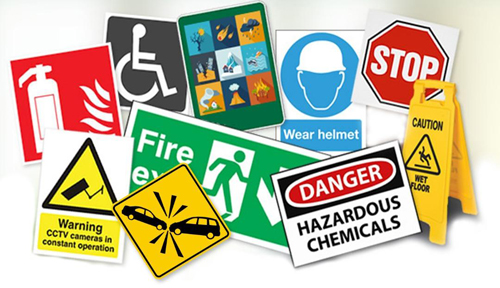آگاهي و نگرش والدين تحصيلکرده در مورد نگهداري کودکان در خودروهاي شخصي و استفاده از صندلي کودک
ارتقای ایمنی و پیشگیری از مصدومیت ها,
دوره 3 شماره 3 (2015),
30 March 2016
,
صفحه 146 - 141
https://doi.org/10.22037/meipm.v3i3.7918
چکیده
سابقه و هدف: کودکان به دليل کوچکي جثه و نداشتن تواناييهاي جسمي و فکري کافي قادر به دفاع از خود در برابر حوادث مربوط به اتومبيل نيستند. نحوه صحيح مراقبت از کودک در خودرو و استفاده از صندلي کودک يکي از عوامل مهم کاهش مرگومير کودکان در حوادث ترافيکي ميباشد. هدف اين پژوهش بررسي آگاهي و نگرش والدين تحصيلکرده در مورد نحوه نگهداري کودکان در خودروهاي شخصي ميباشد.
روش بررسي: مطالعه از نوع توصيفي- تحليلي با روش نمونهگيري در دسترس بود که در سهماهه تابستان 92 بر روي کارکنان دانشگاه علوم پزشکي مشهد انجام شد. پرسشنامههاي اطلاعات دموگرافيک و آگاهي و نگرش در بين واحدهاي پژوهش توزيع و پس از تکميل جمعآوري گرديد. دادههاي جمعآوريشده با نرمافزار SPSS و با استفاده از آزمونهاي مرتبط تجزيهوتحليل گرديد.
يافتهها: 170 نفر از کارمندان دانشگاه در محدوده سني 24 تا 57 سال در اين پژوهش شرکت نمودند. بيشترين سطح تحصيلات مربوط به مقطع کارشناسي با 86 نفر (6/50%) بود. 8/28% شرکتکنندگان هيچگاه از صندلي کودک در خودرو استفاده ننموده بودند. در مورد نوع صندلي مناسب سن و وزن کودک ميزان آگاهي والدين بسيار کم بود و 2/88% پاسخ اشتباه دادند. پدران از مادران در زمينه سن استفاده از صندلي کودک آگاهتر و بيشتر از مادران از صندلي کودک استفاده نموده بودند (03/0=p و 008/0=p به ترتيب).
نتيجهگيري: با توجه به ميزان آگاهي متوسط والدين و نگرش ضعيف آنها در زمينه نگهداري کودکان در خودروهاي شخصي، پژوهشگران توصيه به برگزاري کلاسهاي آموزشي و توجيهي و آشنايي هر چهبهتر و بيشتر والدين با حوادث و خطرات ترافيکي بهويژه نحوه نگهداري کودکان در خودروهاي شخصي در جهت ارتقاي ايمني کودکان در خودروهاي شخصي مينمايند.
نحوه استناد به مقاله:
Khademi G, Nazeri N, Hamedi A, Abdollahpour N, Sezavar M, Gholami H. Knowledge and attitudes of educated parents about carrying children in private cars. J Saf Promot Inj Prev. 2015; 3(3):141-6.
- آگاهي
- نگرش
- والدين
- آسيبهاي ناشي از تصادف
- کودکان
ارجاع به مقاله
مراجع
References
Mccormick EG, Afzali MR. Ergonomy, human factors in engeneering design. 1, editor. Tehran: Academic Sicences; 2008.
Evans L. Traffic safety and the driver. 2, editor. New York: Van Nostrand Reinhold; 1991.
Burch JM, Francious RJ, Schwartz SI, Shires GT, Spencer FC. Principles of surgery. 7, editor. New York: Mc Graw-Hi; 1999.
Mohammadpour AH. Population, development and reproductive health. 2, editor. Tehran: Boshra Press; 2000.
Mahfozi Ali, Kahani Alireza, Abolmasomi Zahra, farzaneh M. Evaluating causes of accidental death among children less than 12 years referred to Tehran forensics medicine during four years. Scientific Journal of forensic medicine. 2001;7(24):5-14.
Vane DW, Spanknebel K, Murphy ET, Wald SL, Rogers FB, Shackford SR. The epidemiology of injury in a rural state: 5,322 cases over 6 years. Journal of pediatric surgery. 1993;28(10):1295-300.
Souminen P, Kivioja A, Öhman J, Korpela R, Rintala R, Olkkola KT. Severe and fatal childhood trauma. Injury. 1998;29(6):425-30.
Pan SY, Ugnat A-M, Semenciw R, Desmeules M, Mao Y, Macleod M. Trends in childhood injury mortality in Canada, 1979–2002. Injury prevention. 2006;12(3):155-60.
Hashemi Rana, Arash A. Evaluating the causes of death among children and adolescents referred to research center of forensic medicine in Tehran province during 2005. Scientific Journal of forensic medicine. 2008;14(1):41-6.
Soori H, M N. Childhood death from unintentional Injury mortality in a developing country: United Arab Emirate. Accident and emergency nursing. 2007;15(4):228-33.
Richard E, Behrman MD, Robert M, Kliegman MD, Hal B, Jenson MD. Text book of company; Pediatrics. 16, editor2000.
Lornejad HR, Hamid B. Death care system of children 1 to 59 months old. Tehran: Ministry of Health, treatment and medical education, Health chancellor, Family and population health unit, children health office2009.
Road saftey authority, UK. No child car seat no excuse. UK: Road saftey authority; Available from: www.rsa.ie/childsafetyincars.
Child Car Seats [database on the Internet]. 2014. Available from: http://www.childcarseats.org.uk/the-law/.
Child restraint laws [database on the Internet]. Queensland Government. 2010. Available from: http://www.tmr.qld.gov.au/Safety/Driver-guide/Child-restraints/Child-restraint-laws.aspx.
Governors Highway Safety Association [database on the Internet]. 2013. Available from: http://www.ghsa.org/html/stateinfo/laws/childsafety_laws.html.
Durbin DR, Chen I, Smith R, Elliott MR, Winston FK. Effects of seating position and appropriate restraint use on the risk of injury to children in motor vehicle crashes. Pediatrics. 2005;115(3):e305-e9.
Decina LE, Temple MG, Dorer HS. Increasing child safety-seat use and proper use among toddlers: Evaluation of an enforcement and education program. Accident Analysis & Prevention. 1994;26(5):667-73.
Şevketoğlu E, Hatipoğlu S, Esin G, Oztora S. Knowledge and attitude of Turkish parents regarding car safety seats for children. Turkish Journal of Trauma & Emergency Surgery. 2009;15(5):482-6.
Karbakhsh M, Jarahi L. Car child safety seats use among Iranian children in Mashad. International journal of injury control and safety promotion. 2014(ahead-of-print):1-5.
Howard A, Beben N, Rothman L, Fiissel D, Macarthur C. Evaluation of Safe Kids Week 2004: Age 4 to 9? It’s Booster Seat Time! Injury prevention. 2006;12(5):316-9.
Collarile P, Valent F, Di Bartolomeo S, Barbone F. Changes in child safety restraint use and parental driving behaviours in Italy. Acta paediatrica. 2008;97(9):1256-60.
Barzgar M, Amini A, Hanaee J, Yaghobi A, Sadr K, Mohammadzadeh H. Knwledge, attitude and performance of mothers of north west of Tabriz regarding care of children less than 6 years old. Journal of Tabriz University of Medical Sciences. 2000;37(59):23-8.
Muller VM, Burke RV, Arbogast H, Ruiz PC, Nunez NM, San Mateo KR, et al. Evaluation of a child passenger safety class in increasing parental knowledge. Accident Analysis & Prevention. 14;63:37-40.
- چکیده مشاهده شده: 324 بار
- PDF دانلود شده: 337 بار
